Slow Start for Transat Jacques Vabre
Published on October 25th, 2015
Le Havre, France (October 25, 2015) – A slow but nonetheless challenging, stressful start to the 12th edition of the Transat Jacques Vabre sent 42 entrants in four different classes out of the Seine Basin in the direction of Itajaí, Brasil on the first of the 5400 miles biennial doublehanded ‘coffee route’ race across the Atlantic.
With tens of thousands lining Le Havre’s docks, beaches and the headlands, enjoying a Sunday afternoon stolen from summer, the very light winds and contrary tidal flow made a slow, sticky start.
If often the late October or early November departure is a true espresso doppio affair, an abrupt wake up, launched immediately into the teeth of an Autumn gale and beyond to the Bay of Biscay, today’s start represented just the opposite. This was much more a lite soya Decaff cappuccino, a pleasant warm up for the sea legs. Instead of the fleet spreading immediately by size and speed, all divisions – 14 Class 40, 20 IMOCA 60s, four Multi50s and four giant Ultimes remained intermixed for the first 20-30 minutes as the duos sought to find the best breeze while countering the tide.
For the five new IMOCA 60s sporting cutting edge foil technology the light NNE’ly breeze was nowhere near enough to allow them any technical advantage. Indeed in this 20 boat fleet, as red hot as it usually is at one year before a Vendée Globe, it was a return to heads-out-the-boat basics, spotting the best wind pressure on the water and making best use of it.
Off the line it was about chasing the virtuous circle. Build apparent win to build boat speed. More momentum generates more apparent wind. Speed builds. And for those who allowed the current to stall their cycle, or who simply ran out of wind pressure, it was sails going Philippe Flop. Dead stop.
Foils? Foiled.
But, as forecast, the breeze built to eight to 10kts after the first 40 minutes to an hour of the race which should take the giant Ultimes about 12 days.
Against the form book it was Fabrice Amadeo and Eric Peron on an older generation Newrest/Matmut (2007 Farr ex Gitana Eighty) who wriggled away to an early lead. They maybe threatened an early horizon job, but in time they were reeled in by the hard tempered, hardest and most recently trained talents from the Figaro and elite Pôle Finisterre training school who scrapped over the lead, three times Solitaire du Figaro winner Yann Eliès and Charlie Dalin on Queguiner/Leucemie Espoir, Paul Meilhat and double Vendée Globe winner Michel Desjoyeaux on SMA, PRB 4 sailed by 2013 winner Vincent Riou with Seb Col and the new Gitana of Sébastien Josse and Charles Caudrelier.
Briton Alex Thomson with Guillermo Altadill started modestly on the new HUGO BOSS and were mid fleet early on. Hungary’s Nandor Fa with Peter Perenyi made a promising opening in an early seventh on Spirit of Hungary. At the Etretat mark it was Queguiner, Newrest, MATMUT, SMA.
Concise Lead
In Class 40 the Ker designed British flagged Team Concise had a share of the early lead, encouraging for the English-French alliance of Jack Bouttell and Gildas Mahé as they sparred with training partners Nico Troussel and Corentin Horeau on the Humphreys designed Bretagne-Crédit Mutuel Elite. And Philippa Hutton Squire and Pip Hare on Concise 2 were fighting in the main body of the Class 40 peloton.
“The boys positioned themselves well for the change in the breeze and were looking really nice. After the mark it will be a fast, 90 degrees reach.” Reported Team Concise’s director Ned Collier Wakefield.
The benign, pleasing conditions are a welcome gentle precursor to a typically nasty Bay of Biscay which stands as the bumpy, windy and potentially boat breaking hurdle to be breached before a reasonably straightforward passage south to the sun. But with the trade winds presently not so well established and an active Doldrums there may be opportunities for the compression and catch ups further down the route. Keynote for the skippers of the newest boats especially is to featherbed their new charges through the worst of the weather and seas. Alex Thomson, skipper of Hugo Boss, said:
“ The fastest route gives you a pounding, straight through the low pressure. I don’t like the look of that very much and so we will be watching and monitoring the other options. I don’t fancy 40kts and six metres waves. We have not done that on the boat yet and so we need to really look after the boat. That is priority. I am looking forwards to it.”
They said:
Nandor Fa, HUN, IMOCA Spirit of Hungary: “I slept well last night. The forecast is what it is. There is always something out there that you would want to avoid but for me this is not a problem. All these race starts are new and feel different so it is always exciting. We are looking for a fair race. Always we are looking for a fair race. It gets more exciting each time for me. We try to sail as fast as we can as much as we can and sail safely. There is no other choice than to stay with the fleet and stay close to the French coast. This is the first big, real speed test for the boat and a duration and reliability test.”
Alex Thomson, GBR, IMOCA HUGO BOSS: “The fastest route gives you a pounding, straight through the low pressure. I don’t like the look of that very much and so we will be watching and monitoring the other options. I don’t fancy 40kts and six metres waves. We have not done that on the boat yet and so we need to really look after the boat. That is priority. I am looking forwards to it.”
Jackson Bouttell, GBR/AUS, Class 40 Team Concise: “It is a relief now to be leaving. After all the build up it is good to push the boat off the dock and actually go. It is always harder when you know you are going to sail into quite a lot of wind in the next few days. But we are just trying to keep ourselves together through the next few days. I think out of the start we will try and sail clean, fast and stay with the pack. That should work for us. The first night looks OK and so we will just try and go fast. When we get into the bigger winds it is keep the boat in one piece and try and stay with the fleet. I think until Cherbourg it is straight line reaching with the wind building. And then after you get to the corner, to the Raz Blanchard, there is an option to go north or south. That will get clearer on the next GRIB files but the north is quicker but if the low pressure moves then that will become longer and the south can end up upwind all the way to Cape Finisterre. It is tricky and for us we will want to stay with the fleet. if the majority goes one way then we will go with them. We do not want to throw away a whole race on a flyer. And on the northerly route there are more waves than on the southerly route. On the first night we can sail the boat how she should be sailed but I think most will wait to get south before they really put the hammer down.”
Ryan Breymaier, USA, IMOCA Adoptunskipper.net: “I had a good night’s sleep until I was woken up by our baby Rosemary at 0500hrs. It is looking getting out of here but not so beautiful getting out of the Channel. But that is life. These boats are made for this. Often you can go around so you don’t have to sail into six metres waves, but it is what it is. If you start a race here in the English Channel at the end of October you are going to get hit by a low pressure. In the beginning we prepare ourselves for the low and then just keep boat together. We will go as slow as we need to to do that. It will be hard to go slow. The boat’s natural instinct is to go but we will have some very small sails up and just take it slow and stable. After that it is should be a free ride to Brasil. I like this old trade route. It is interesting to follow in the footsteps of people who came before us. I think that is a large part of this race and why Jacques Vabre are involved. I think it is great.”
Philippa Hutton Squire, RSA, Class 40 Concise 2: “I hate race start days. I hate the time on the dock. The prime objective is to get out of the English Channel is to get out of the English Channel in one piece, unlike last year (she retired from the Route du Rhum after a collision with another competitor on the first night) We are just going to try and find the best route.”
Francois Gabart, FRA, Ultime, MACIF: “At the start we have light winds, current and lots of boats to look out for. And then from tomorrow lots or wind and big seas. Tomorrow night we will be at Cape Finisterre. So we have 24-36 hours of Rock n Roll. departure, we will have little time, current, many boats, and then there will be a lot of wind and sea from tomorrow. It will go fast, so it will have to go faster in the game. Tomorrow night, we will be at Cape Finisterre, we will have 24 to 36 hours of rock’n roll. On a race like this it all goes very fast, you have to be straight into your game.”
UPDATE: This evening at 2215hrs UTC/2315hrs CET Jérémie Beyou, skipper of the IMOCA 60 Maitre Coq, told his shore team of a problem with their forestay. According to the information provided by Beyou, the stay which holds the mast to the bow had unscrewed and so duo, Beyou and co-skipper Philippe Legros, will stop into Roscoff where his shoreteam will be waiting to assess the problem and make a repair. The problem occurred while the boat was in 4th position after 10 hours of racing. The team is fully motivated to ensure the repair is completed quickly and Maitre CoQ can resume racing as quickly as possible.
Race website – Tracker – Facebook
Transat Jacques Vabre in brief
• A legendary race 22 years old and 2015 marks the 12th edition
• Two founding partners: the city of Le Havre and brand Jacques Vabre
• Four classes on the starting line: Class40, Multi50, IMOCA and Ultimate
• Starting October 25 in Le Havre (FRA) for the 5400nm course to Itajaí (BRA)
Report by event media.




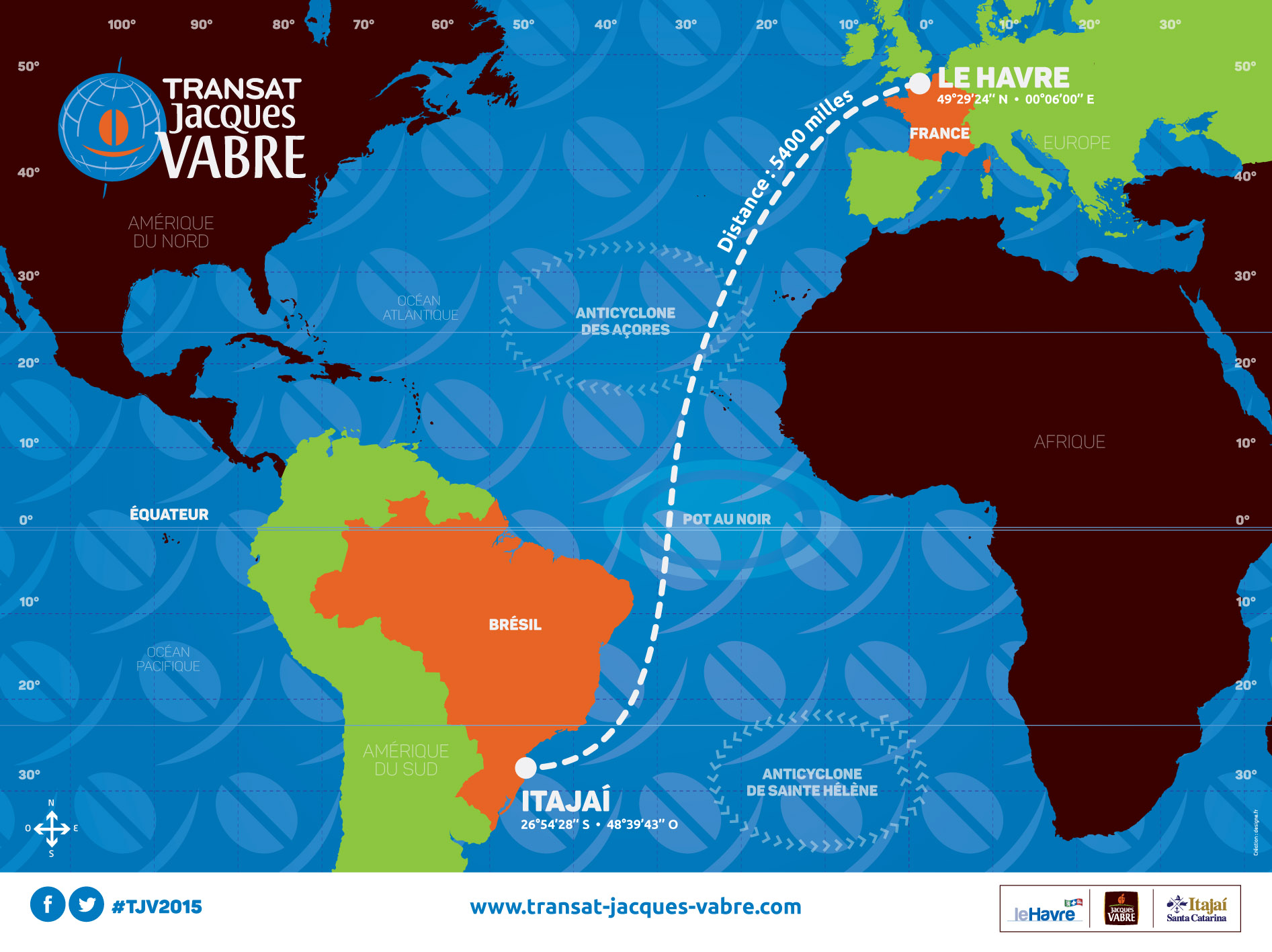

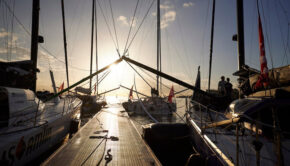
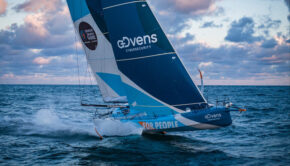
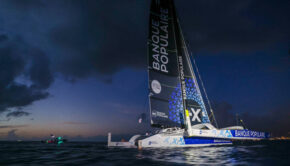
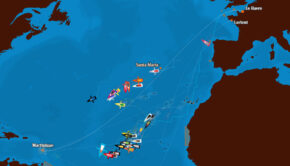
 We’ll keep your information safe.
We’ll keep your information safe.